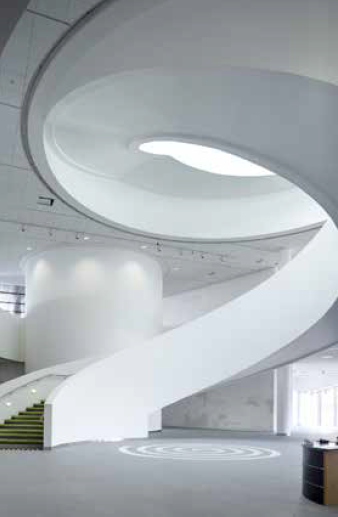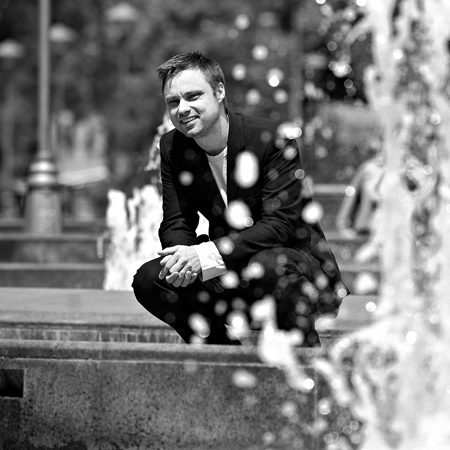
INTERVIEW WITH KIM HERFORTH NIELSEN, 3XN – ICON DESIGN MAGAZINE
The Danish architect met ICON after his talk at Belgrade Design Week this month to discuss his practice’s people-centred architecture and his holistic approach to sustainability.
You’ve talked a lot about the open and flexible approach to teaching and learning encouraged by one of your early projects, Orestad College. How important to your architectural process is your ability to shape building users’ behavior?
It’s crucial – it’s what drives our work. What’s happening inside the building is much more interesting to shape that what is outside. The big difference between architecture and sculpture is that architecture contains people, so it influences daily life – city life, the activity inside a building. I believe architecture can change and shape behavior – there are examples of architecture that has had to be demolished because it created bad environments.
I can’t see architecture being made in any other way. If we only make sculptures for ourselves, then we have failed. But if we make beautiful sculptures that are for the community, then that is success.
It took a while before we really realised that this is what we wanted to focus on. Orestad College was seven years ago and there was no brief for the competition – more a vision of how education should be in the future, which we gave physical form. Now we have an architectural psychologist at the office, who evaluates the kinds of spaces we work with to see if they work.
When the last British government was in power, we had groups from the UK coming to Denmark to observe the school and how it works. Unfortunately, the new government threw it all away and now just wants to standardise schools. It’s so important to make schools and workplaces in the right way – it may cost a little more, but the benefits are hundred times greater.
Do you feel that architects then have a social responsibility?
We have a huge responsibility, especially now as big cities are densifying. In developing cities like Mumbai, where we have recently started working, many problems have to be solved by architecture.
Working in India is complicated. When you start working on one problem, you find another that is connected, and then another. So we can’t do it on our own –we need the backing of politicians in such countries and they need to have a greater tendency towards master-planning.
In Europe, do you think architects have enough of a public role?
No, but that’s very much our own fault. Architects have to communicate what we are doing in different ways and to different people. If we only communicate that we are doing buildings that are like Ferraris all the time, then normal people can’t connect to it.
3XN’s research arm focuses in part on reducing waste on building projects. Do you think the concept of sustainability has fallen off the agenda somewhat since the financial crisis?
No – I think it’s going in the right direction. In Denmark at least, our building codes become stricter and stricter every year, but we don’t talk about it much anymore because it’s just there – just like there’s no need to talk about buildings having to be suitable for disabled people anymore: of course they have to be.
But we are also working in north America and they are a bit behind in that sense, because there is a feeling that only tenants benefit from energy efficiency. I try to tell them that you can then have slightly higher rent, because tenants’ total savings will be greater. It is beneficial for everyone to do things sustainably.
Sustainability is also holistic – for example, you can make a 25,000sq m building that uses very little energy per square metre, but perhaps you only need to make it 20,000sq m, which is even more efficient. And then there’s the question of whether people thrive in a building, if they like being there – that’s also an important aspect of sustainability.
What’s next for 3XN?
I’m looking forward to continuing work on the high-rise we have won in Sydney. The reason we won it is that we looked at high-rise as not just a pretty dress, but at how the building works and its sustainability. We are trying to look at the challenges of densifying cities in a new way and our projects in the UK and north America are also ones that can make a difference to cities.
Read the original news here.
Trackback from your site.


